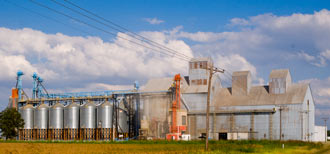After discovering the tire man, there was daylight left to burn so I headed east on Arkansas Hwy 1. In a few miles, I encountered a cotton field, ” … ripe unto harvest. “Recalling that more than a few readers, not privy to southern agriculture, enjoyed seeing soybeans up close and personal a couple of weeks ago, I did some cotton shots. It’s old hat to those of us in these parts.
To those not so familiar, take a look at your new sheets or shirt in the rough.
After cotton is picked it goes to a gin which essentially spits seed and trash out one side and bales of cotton out the other, thanks to ol’ Eli Whitney. He first filed his patent for what is now known as the cotton gin in 1794. Time flies when you are having fun. But it was not as much fun for Whitney as one might think, of an inventor who presented the world with what is known as one of the most important developments of “the industrial age.” His machine was relatively simple and easy to pirate. And so it was. He complained to Congress and they more or less ignored him. Life goes on.
Years ago, as late as the early and mid sixties, there were a plethora of gins in cotton country. As transportation and gin technology advanced, newer larger, more centrally located gins began to corner the market. Now one sees a lot of older gins no longer in use. They have become case studies in ferrous oxide (rust to the non-chemically oriented). Before electricity saturated rural areas, many gins operated on power from internal combustion engines. One clever operator in our area was reported to have powered his gin with a WWII war-surplus tank engine.
Back on the road, I pulled into a small Delta town with rich historical roots, Watson AR. Prior to 1874, the nearby town of Napoleon was the county seat of Desha (Dee-shay) County. Unfortunately, the rampaging Mississippi River gobbled up Napoleon, and the county was not ready for, nor equipped to operate with an underwater county seat. So the county seat was moved to Watson. But just for a few years. Now the county seat is at Arkansas City to the south of Watson. Arkansas City had it’s brush with the Mississippi River as well. Once a vibrant, bustling, river port town on the Mississippi, it was left 13 miles inland from the river after the infamous 1927 flood. With no commerce, the town dwindled, but is alive and well today.
What remains of Watson today is a nice, southern town. I found Bonnie’s Cafe in Watson. I took a peek in the window and determined that Bonnie’s Cafe is alive and well, but closed on Sunday afternoon. The “open” sign was laying on one of the tables in readiness for welcoming Monday’s customers. Though I could not enter the cafe, I could see the checkered table cloths on a cluster of tables. The back wall decor is a collection of old tools. Live, not plastic, plants adorn the windows.
A couple of recycled van seats on the front porch provide creature comfort for lingering customers, or more likely, those waiting to be seated inside.
If my guess is right, Bonnie’s does a good business from a phalanx of loyal and grateful customers. I’ll also bet the kitchen has more than one well-seasoned cast iron skillet.
Shopping centers and mega stores may lure retail customers away from small towns, but these corporate giants cannot under any known circumstances stand toe-to-toe with a good down home southern country cafe. I intend to verify my suspicions of Bonnie’s culinary prowess, armed with a well-honed case of the galloping hungritis. I’ll report back.
Thanks for dropping by,
Joe
Filed under: Behind the Scenes, but wait, there's more | Tagged: cotton field, tire man | Leave a comment »


















